Always Run the Fastest Tire Pressure
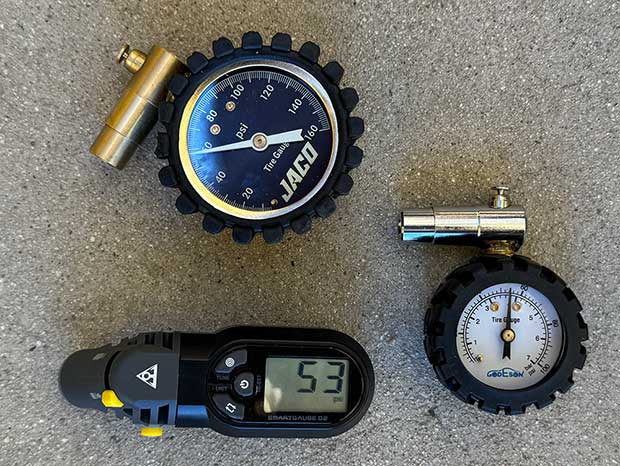
Running the right pressure all the time might seem like a chore. Easier said than done you might think. In truth it’s pretty easy and learning to know the right pressure, and run the right pressure every time, it will take you about 7 minutes if you continue on below to the finish.
First you need to accurately know your tire’s pressure. Unfortunately no, your floor pump is not very accurate. Besides, floor pumps have been in my rear view mirror for decades now except when I travel. I always inflate with a small compressor and this method has the added advantage of allowing you to seat the beads of a cranky tubeless tire. If what you need is a lot of volume into your tire quickly, you take out the presta valve core and shove a bunch of air into your tire using your compressor. I also use compressed air to dry my bike after I wash it. If you do use a compressor this means you need something not your floor pump to measure the pressure in your tires.
Standalone presta valve gauges are really cheap. Pictured here are 4 of them you can get on Amazon and the expensive one is the Topeak digital gauge which all-in, tax included and delivered, cost me $33.87. This is accurate to +/- 1psi and I would expect it to be because it’s from Topeak, the Taiwan-based bike tool company that has been making really first-rate tools and accessories since the brand debuted in the mid-1990s.
The other two units shown are the GODESON analog gauge at $10.99, which goes up to 100psi and the JACO RDX-160, which as the model indicates goes up to 160psi and sells for $22.90. There’s another gauge below I’ll write about and I’ll continue discussing these gauges below but if you just want to know what’s the best bang for your buck get the GODESON. They’re all good. Three have, based on my use of them, measure to about +/- 1.5psi if you’re measuring pressures under 80psi, and the JACO appears to measure high by 3 to 5 pounds (which is still better than a lot of floor pumps).
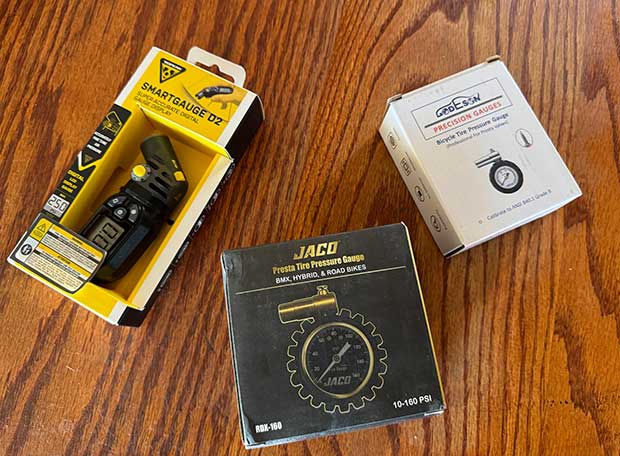
I always measure tire pressure before I ride. I always measure after I inflate with a pump or a compressor. (And theoretically after a CO2 inflation on the road but since changing to road tubeless 5 years ago I haven't had a flat.) Pinching with your fingers doesn’t tell you. Pinging the tire doesn’t tell you. Only direct measuring tells you.
What pressure?
I’ve published a suggested pressure for select tires that go on wheels with hookless rims. My pressures are a bit lower – 7psi to 8psi – than what you’ll find on the highly respected and often used Silca tire pressure calculator. Bookmark the Silca calculator, because either its right or I’m right and if you think it’s right just use it. If I'm right you still may want to use it.
Why are my suggested pressures lower? I'll explain.
First thing, make sure you use the Silca calculator right (many don’t). It says there right on the calculator “measured” tire width as an input, not “nominal” tire width and nominal means the named size on the tire. A 27c tire is supposed to measure 27mm; a 30c measures 30mm, and many or most people just think, “How much difference can it be? (Besides, you don’t have a caliper to measure your tire’s width accurately, right?) You’ll just plug the nominal tire size into Silca’s calculator.” Let me tell you why that’s usually wrong if you’ve recently purchased race wheels. The ETRTO and the ISO (Euro and US standards bodies respectively) say that if a brand makes a 25c tire it should measure 25mm on a rim that measures 19mm in width from bead to bead. If it’s a 27c up to 30c tire it should measure that width on a rim with a 21mm internal bead width. Many road rims today have internal bead widths from 22mm up to 25mm, and for every 2mm of extra bead with the inflated tire diameter grows by almost a millimeter.
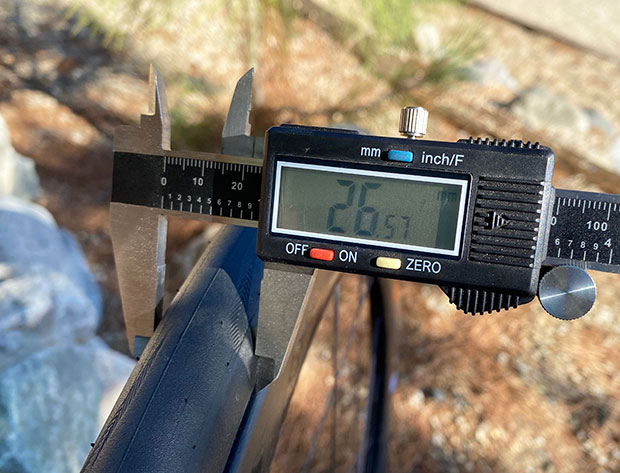
For this reason, the 30c tires Tadej Pogacar rode front and rear on almost all of his road stages in the most recent Tour de France measured 31.5mm in width, because they were mounted on ENVE SES 4.5 rims which measured 25mm between the beads. Plugging 32mm into the Silca calculator will give you a 7psi lower recommended pressure than plugging in 30mm on that Silca calculator (for Pogacar, for his 30c tires on the ENVE wheels, Silca on worn roads recommends 63psi/61.5psi rear and front). So, you might want to invest in one more tool. Yes, you can get a Mitutoyo digital caliper for $118 (that brand is the gold standard) but I own a Neiko digital caliper that reads imperial and metric and it’s crackerjack at $23.99 (and is pictured here).
Still, why are my pressures lower, even if only by 7psi, than Silca? First, there’s rarely one pavement condition during a ride but your option with Silca is to choose one condition. You might choose to pressure your tires for the condition you find most often, but be careful there. Let’s take Paris Roubaix and yes this is an extreme example and I use this to make a point. That race is 160 miles of mostly moderate, reasonably smooth pavement. But just under a quarter of that race are pavé. These pavé sectors influence tire model, width and pressure much more heavily than you'd think when you contemplate that 125 miles of the race is pretty smooth tarmac and only 35 miles are cobbled. What you lose by being 5psi or 8psi underinflated for a smooth road is extremely minimal and that’s if you’re underinflated at all, which we’ll discuss. What you lose by being overinflated for a rougher section might be ten times that, and that’s the case whether road race, TT, tri or gravel.
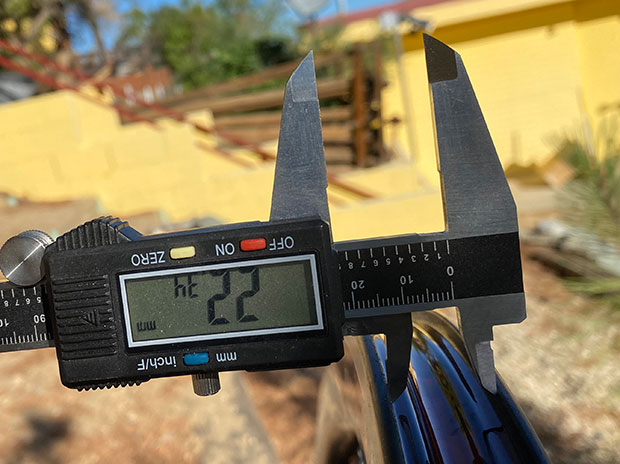
There is probably an algorithm (which I don’t have) that says, “so many miles of smooth pavement, so many miles of rougher pavement, ” pothole sections, freeze cracks and so on and the algorithm weights the rougher pavement much more heavily than it does the smooth sections. Plug in the numbers and your pressure spits out. Because of how heavily I weigh rougher sections of road I end up with a lower pressure.
But even so, you’d be surprised how low the pressures are even for top TT specialists. At last year’s cycling World Championships American Chloe Dygert won the women’s elite, riding 55psi in her front tire and 58psi in the rear, both tires 28c in width. Antonia Niedermaier, World U23 champion in that race, also rode 28c tires and had 58psi in the front and 59psi in the rear. A combo by at least one US rider in the women’s Olympic Time Trial were 30c tires pumped to 55psi, acknowledging that spec chosen because of the rain.
Hooked or Hookless Beads?
I have no data that says the pressures change based on bead type. I have heard – but only anecdotally – that hookless beads call for pressures maybe 3psi lower than hooked, and the reason could be that the tire stands up better in the rim. Is not pinched at the waist. But I cannot get any wheel company that makes hookless rims to say their rims take a different pressure than a hooked bead with the same spec. Maybe the reason I’ve heard this is that road rims with hookless beads are universally made with wide inner bead widths (22mm to 25mm), and just that means the tire will inflate wider than on a thinner rim with a hooked bead, and any tire measuring wider on the rim needs a lower pressure.
The Biomechanics of a Rough Ride
In recent years we’ve begun to see scholarship on the effect of vibration on cyclists, including a paper on what happens to riders during Paris Roubaix. What we’ve seen in both running (HOKAs, supershoes) and in cycling over the last decade is the recognition that repetitious ballistic forces on the human body require an energy expenditure that does not contribute to forward propulsion.
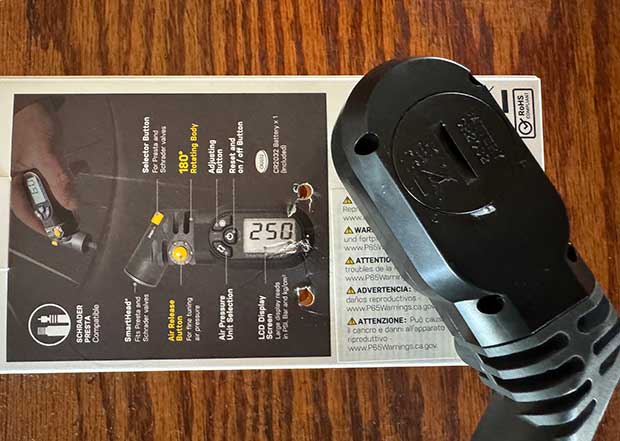
Look at this this way: There’s a posture you strike aboard your bike. On your tri bike this is your aero position. Any time you go over a bump, however large or small, your head is forced downward. This requires a contraction of your suboccipital an trapezius muscles and that’s pretty obvious. It’s like a little tiny whiplash. You’re less aware that it’s not just your neck, but muscles throughout must contract to stabilize your body. A paper last year sought to quantify the effects of vibration and there’s a metric these academics now use called Vibration Dose Value (VDV). Reducing this to math gives us a chance to think about a global equation for speed that incorporates drag, Crr and biomechanics when we optimize racing equipment.
What makes this hard to measure for us is the time it takes for these micro insults to manifest themselves. I look at it like a boxing match. Absorbing 1 jab over 8 rounds probably won’t affect your ability to prosecute your battle. Five or 10 might not matter. But 40 or 50 jabs over 8 rounds may well ruin your plan. In our world it’s hard to imagine putting a relevant sample of athletes through a relevant number of several-hour bike rides, unless you’re a classics racer and you’ve learned the hard way what tire widths and pressures not to ride over the cobbles.
Stop Writing! Just Tell Me What Pressure Should to Run!
There are people whose job is just this – determining proper tires and pressures for the conditions – who disagree with me. I always feel that I’m not on stable ground when I disagree with people who do something for a day job. But here goes. I think it’s a wise move – and those experts to whom I allude would probably not disagree with me – to just use the Silca pressure calculator. Or to at least start with it. Just remember, it’s measured width, not named width.
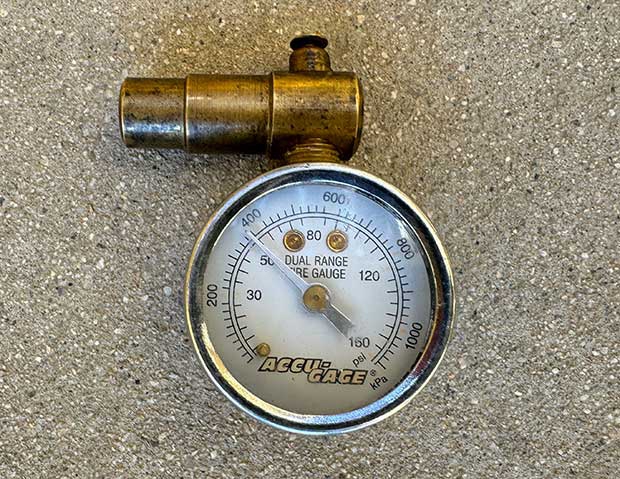
When I plug Chloe Dygert’s values into the Silca calculator and use 30mm measured for her 28c tires on Zipp’s current wheels (that tire will measure close to 30mm in width) and I choose “worn pavement / some cracks” I get a pressure of 68.5psi. As we see she was riding about 10psi lower and I typically find that I ride about 7psi lower than the Silca recommendations. So, to hedge your bet maybe Silca minus 3psi to 5psi?
The Best Air Pressure Gauge
My favorite for years has been the Accu-Gage. It’s small, accurate, and its accuracy does not degrade over time. It $14.67 today on Amazon and my only beef with this particular gauge – which goes 0psi to 160psi – is that it’s not as easy to read as some others. (Nope, we don't get a commission on any product listed here; buy whatever you want from whomever you want.)
For this reason I lean a little toward the GODESON and while its 100psi max used to be a limitation in cycling it no longer is unless you’re on a velodrome. These gauges come with little tire tread covers. If you take the little tire treads off they pack smaller, as in, if you take the cover off the GODESON it looks and packs pretty much like the Accu-Gage. I really like the Topeak and if you look at the back of it you see the familiar, comforting door that you know hides a 2032 coin cell battery. The only thing about the Topeak is this: There is a post on every tire gauge of any type that hits the part of the valve core that depresses air. Pushing that presta valve plunger allows air to pass out and into the pneumatic reservoir (the tire in this case). That post is a little proud on the Topeak and if you’re not diligent you’ll let some air out just before the presta valve is swallowed by the rubber gaskets that make the seal between the gauge and the valve. If you don’t want that leak of air you have to line the gauge up and push it on quickly, before any air escapes.
All 4 of these gauges come with a pressure stop, meaning that you don’t need to read the pressure as you’re taking it. Get your pressure reading, read the pressure at your leisure, press an air release plunger on the gauge to zero the reading.


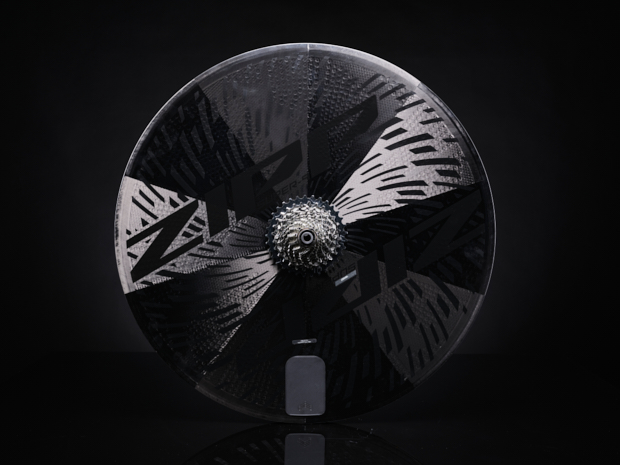
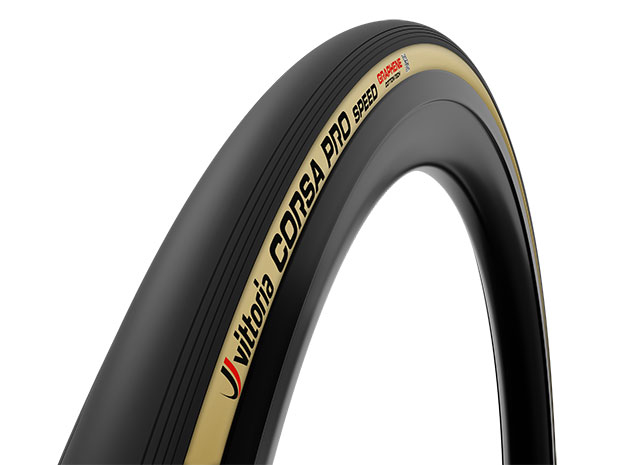
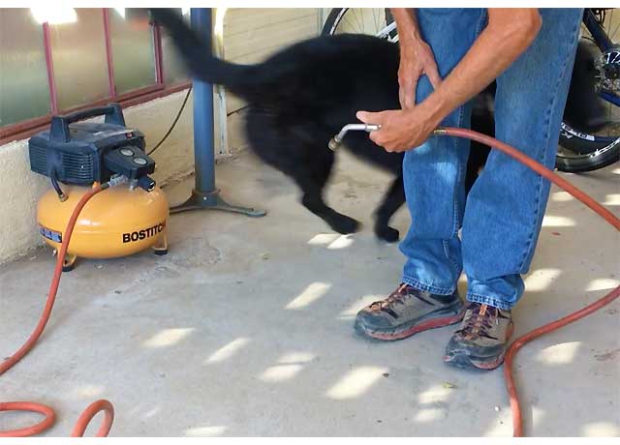
Start the discussion at slowtwitch.northend.network